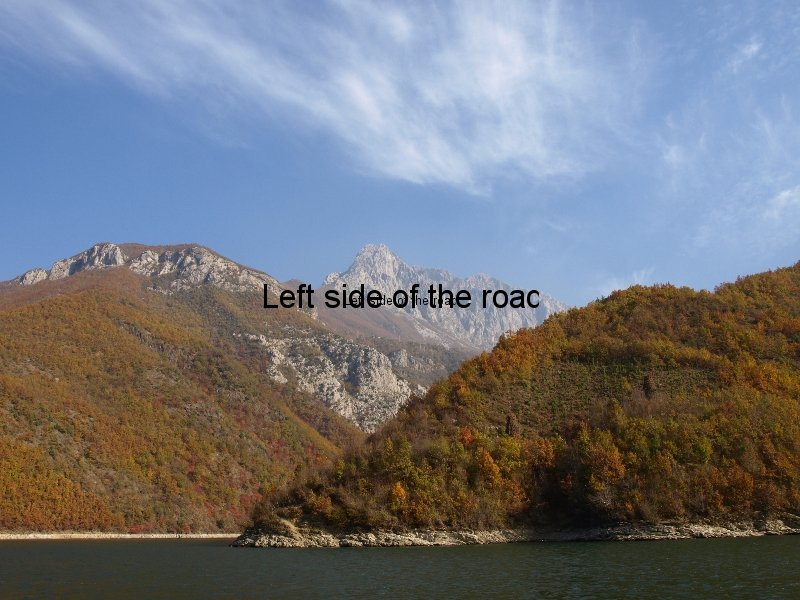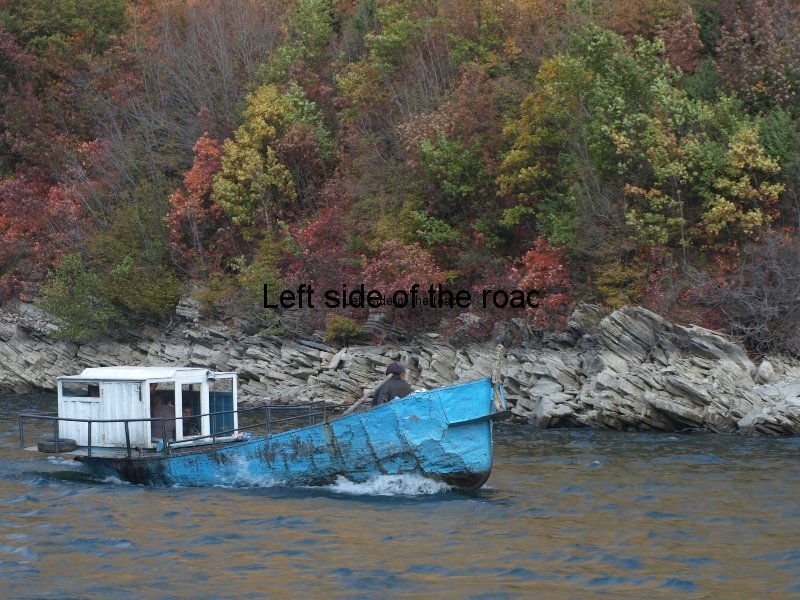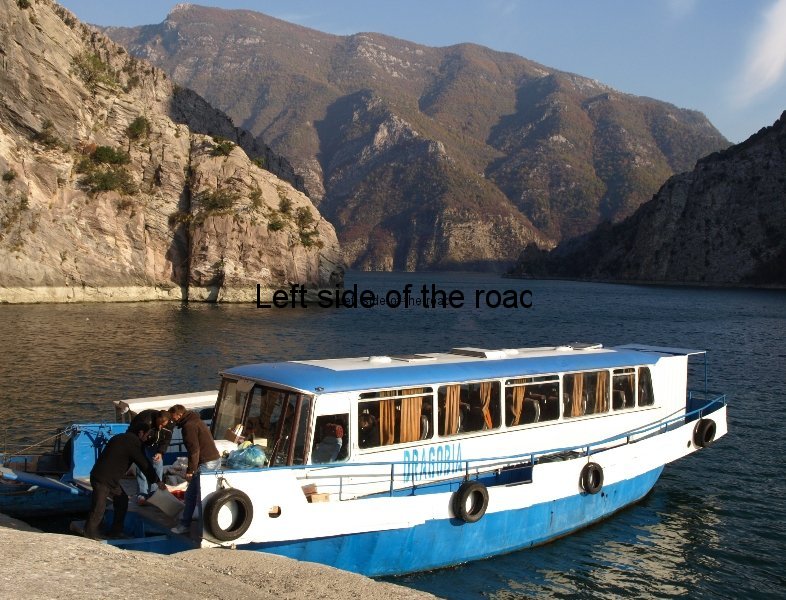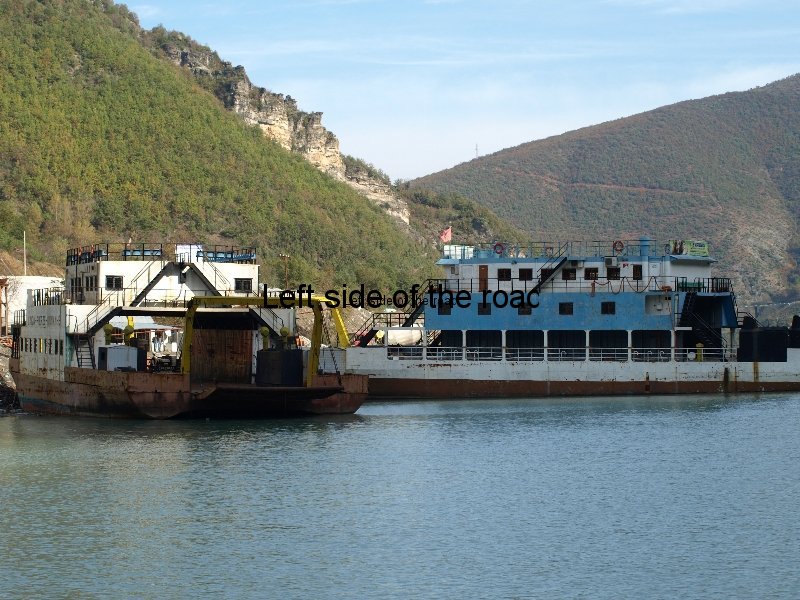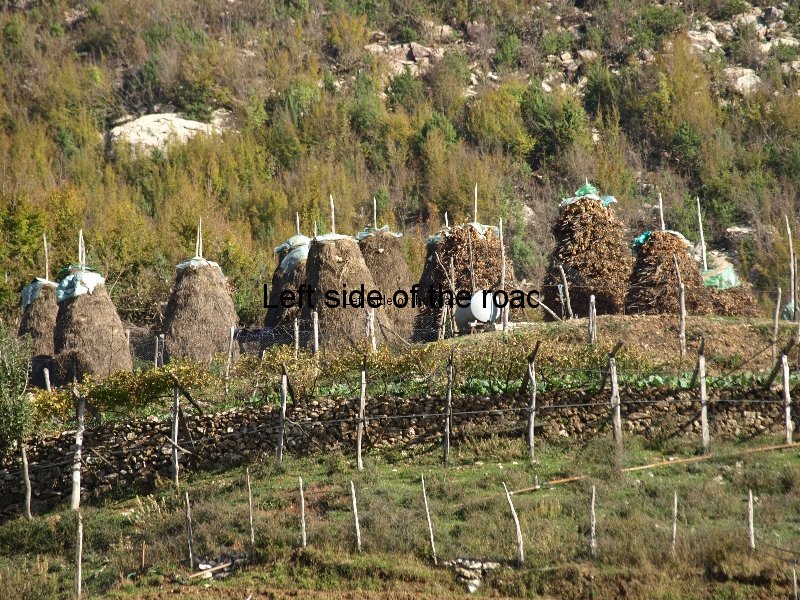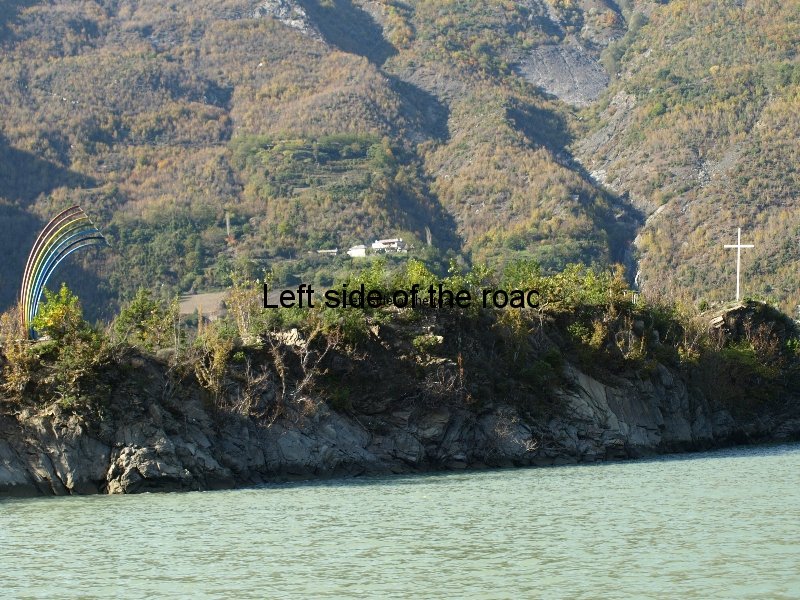The Bus from Bajram Curri to Tirana
or
How to officially enter a country without setting foot in it.
One of the joys of travelling is the unexpected. Well, I suppose, many people have come across a form of the unexpected they would rather not have experienced but those unpleasant situations can happen in your own country. The unexpected that I’m talking about is the experience when something happens, something changes, something develops in a manner that was totally unforeseen at the beginning, but all ends up well.
This was the case when I wanted to get from Bajram Curri, in the very north of Albania, back to the capital Tirana – more or less in the centre of the country.
I had arrived in the area via the Komani ferry and had spent some time (unsuccessfully) attempting to get to Thethi via Valbona. It was my fault (for a number of reasons) that I didn’t achieve my original goal but that wasn’t the first – and I’m sure it won’t be the last – time that such has happened.
But at some time I had to get back south and so decided on the bus route from Bajram Curri. I didn’t start out with no information, it’s just that the information wasn’t exactly accurate. This is where the adventure starts in a place/country where there is little accurate and up to date information. The only British guide-book I had at the time had so many flaws it was bordering on worse than useless. It might be argued that things are changing in Albania rapidly, and that’s true, but I came across errors that didn’t reflect changes that were made long before the particular edition was published. I don’t want to labour that point, just to say ‘beware of guide books’. Take into account the most important word in the phrase and use the information provided as an indication and not to consider it as gospel.
My guide-book gave the indication that the bus to Tirana would take a tortuous, uncomfortable and very slow route through the mountains. That wasn’t a problem. I wasn’t in any real hurry and it wouldn’t be the first time (or, again, the last) I had travelled on such bad roads. Getting older the pains last a little longer but a day or two of rest and a not insignificant amount of alcohol has always dissolved the aches and pains in the past. And, anyway, it was the chance to see another part of the country.
I was starting fairly early in the morning. The guide books seem to indicate that much of the transport in Albania tails off considerably after midday. That’s true in some places but my experience over my three trips to the country is that people in generally are wanting to travel later in the day and the buses or furgons (minibuses) are starting to fill the gap, one of the ‘glories’ of the free market. However, if you don’t have exact information it pays to start early, just in case.
I should have realised that something was not what I was expecting when I was asked by the driver, once I had discovered the next Tirana bound bus, to hand over my passport. Now, I don’t have a problem of not having my passport, especially when I’m out of the country. The worst that can happen is that I won’t be able to get home. When the request is unexpected it’s a little disconcerting but when I saw that he was asking for everyone’s passport (I was the only obvious tourist on the bus) I relaxed a little.
We left on time and I was trying to work out how long it would be before we made a turn off to the right. From the map the route would be, more or less, north-east for a few kilometres and then south-east along the rough road towards the town of Kukës. But we kept on going NE and climbing and coming down from the hills. A very attractive route as we were passing by the mountains and hills in the very north-east corner of the country. Everyone else was relaxed so I assume there was no attempt at a mass kidnapping.
Then we arrived at a border crossing, so now I understood why I had been asked for my passport. A big pile of passports was passed to the immigration but no one made any attempt to see if the passports bore any relationship to the passengers. I was now in Kosova.
At this point I still wasn’t sure of my eventual destination. I was sure that there wasn’t another major destination in the area that sounded like Tirana but not planning/expecting to enter Kosova I hadn’t done any research before leaving home. I few people got off at some of the towns we then passed through but the majority stayed on. I thought my best plan was to stay on to the bitter end and just play it by ear.
The bus picked up a better, faster and wider road and then I started to see signs for Prizren. That didn’t sound like Tirana and anyway we didn’t enter the town, skirting around it towards the south. The bus then took a major road, now moving quite quickly, in a south-westerly direction. Slow witted I might have been but I started to work out what was happening.
In place of going along a very rough, very slow mountain track that would have taken hours, we had kept to the best roads to make the most speed. The only way to do that was to leave the Albania and use the roads that had been paid for by the World bank, IMF and the EEC after they had successfully dismembered the old federation of Yugoslavia following a long, bitter and hugely expensive war, both in terms of resources and human lives.
On arriving at another border post my realisation was confirmed. Immediately after moving off at the border the passports were passed from the front of the bus to the back, mine arriving quickly as it was the only one where they didn’t have to check the photo to know who it belonged to. About 15 to 20 minutes later, overlooking the town of Kukës, we stopped for a break at a road side café, back in Albania with the known brand names for the beer and the like.
On moving off from there we travelled on an amazing motorway. Amazing for the effort needed in its construction and for the fact that there was so little traffic passing along it, in either direction. Again a road funded by foreign money but I couldn’t really see how it benefited the Albanians. Thousands travel every day along the coastal highways, from Shkodër in the north to Saranda in the south. Parts of that road are atrocious and work, in places, had been stalled for as long as I’ve been going there, presumably due to lack of resources.
Why this motorway in the isolated mountain area of eastern Albania was a priority has nothing to do with the Albanian people or their economy, but more for any future foreign interests. Mainly military, I would have thought, to get to the heart of the country and its capital Tirana, in the quickest possible time, in the event of anything developing that might have an adverse effect on foreign control of the country that has been an aim since the end of the 19th century. That’s my theory but would welcome any other ideas.
So I eventually got to Tirana, my original goal, and probably much quicker than my expected route. I wasn’t kidnapped and held to ransom. It was just the quickest way. The next time I’m in that area I will attempt the rough route and keep hold of my passport.
But now I have a stamp (only one – I didn’t get one for leaving Kosova) in my passport for entering a country in which I, literally, have never set foot.










